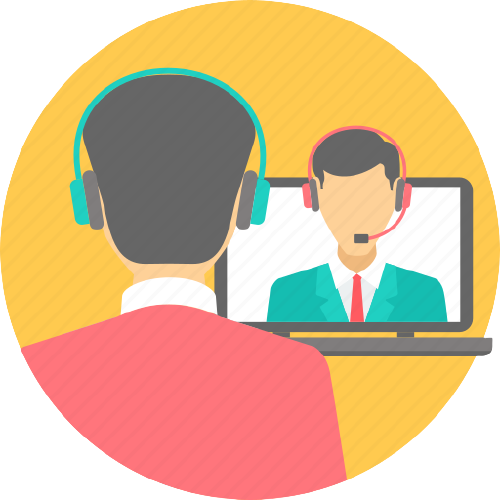E-Learning Development
overview
What is E-learning Development?
What is the definition of “E-Learning”?
E-learning, also known as online learning or electronic learning, refers to the acquisition of knowledge through the use of electronic technologies and media channels. In a simpler language, e-learning is defined as “electronically enabled learning” that range from the countless “how to” videos on YouTube to e-learning platforms of universities or entire online study programs and digital masterclasses.
In general, e-learning is carried out on the Internet, where learning materials are available at any time and any place.
What are the 5 biggest advantages of E-Learning?
Flexibility
The first advantage of e-learning is flexibility in terms of time and place. Learning content is usually made available in short modules and can be paused at any time. Whether you log on while commuting, at work or during your free time- the learning material can be easily made part of your daily routine. Even if you miss a live online workshop, written summaries or a video of the session is usually available to be downloaded. E-learning is therefore ideal for people working or in education, or simply people who want to know more about their favourite hobbies or interests.
Availability
The organization of teaching content at universities is almost unimaginable without platforms such as Moodle and Blackboard, but online courses also save vast amounts of time in the private sector. Without physical limitations, anyone with Internet access can simultaneously access learning opportunities – provided that the servers are stable to withstand.
Efficiency
Since e-learning packages adapt to the individual learner, the time required to complete a course is significantly reduced. Conventional courses are designed to meet the needs of the entire group. But rarely does a single person need everything that is offered to the group. And, of course, there is no need to travel to the course.
Low Cost
An e-learning package can be reused as often as the user wishes without additional costs. In addition, there are numerous free course offers as well as “freemium access”. Since e-learning usually allows more course participants at the same time, it is often less expensive than conventional learning offerings.
Mobile
E-learning takes place wherever you want! All you need is internet connection. Learning materials, tutorials, transcripts – everything is stored in digital cyberspace and cannot be lost with a good back-up.
These advantages alone show the near unlimited potential of e-learning. Nevertheless, there are also numerous reasons why traditional learning methods are far from obsolete.
10 Tips for Successful E-Learning
1. Set intermediate goals
Realistic learning goals enable you to keep an eye on the success of your e-learning and to keep your motivation to learn high. After all, every participant, no matter how eager to learn, needs a sense of achievement time and again. So read your online course requirements carefully, make notes that are closely related to your goals, and review them thoroughly each time.
2. Evaluate the course
Imagine that you have already set reasonable learning goals. But what comes next? The next necessary step is to research the existing e-learning proposals on the market in order to select the proposal with the highest added value. So try to research the ratings of other learners, or use free trial versions.
3. Create an ideal learning environment
Whether you want to study in the office or in your living room, make sure that it is quiet, organized, distraction-free and available at all times. Also, ask friends, relatives and colleagues to respect your “learning mode” and turn off your phone.
4. Develop a learning plan
Procrastination is the worst enemy of online learners. So be sure to stay organized and not fall behind in your online class. At the beginning of each week, create a to-do list of tasks that need to be completed by the end of the week. This is a great way to prioritize your study plan and not lose track of what you need to do.
5. Integrate your e-learning into your calendar
The goal must be to make e-learning a routine that has a fixed place in your weekly schedule. Therefore, it is also important to enter concrete times in your calendar and thus give the learning progress the necessary priority in your everyday life.
6. Slowly increase the level of difficulty
The best way to do this is to increase either the number of tasks or their difficulty. It doesn’t matter which method you choose, as both will lead to the goal. The important thing is that you yourself continue to grow with the task.
7. Review, revise, repeat
Regular revisions of things you have already learned not only improve your memory but also promote a general understanding of your field of interest. No matter if you work with flashcards, keynotes or your own summaries, the learning success will be noticeable and upcoming tasks will be easier to solve.
8. Find a learning group
Not all e-learning courses allow for an exchange with other course participants. Even if this is not the case, you can participate in discussions in relevant forums and thus find allies. Why? When you work in a group, you get alternative views on difficult concepts, have a higher motivation to achieve better results and can always ask someone.
9. Look out for interactive courses
The eye learns as well. A big advantage of e-learning is the enormous range of preparation possibilities. Simulations, appealing graphics and audio-visual teaching aids help to understand difficult content better and increase your willingness to learn.
10. Take continuous breaks
Performance often decreases with learning progress or you reach a learning plateau and motivation suffers. Therefore, planned breaks are extremely important. Make sure that your breaks do not take place in your learning environment. Especially physical activities help to keep a good balance, refill your energy reserves and return to learning with a clear mind.
The Future of E-Learning
Observing the disruption of the entertainment industry through streaming services, one gets a first insight into what the e-learning sector is about to face. Netflix, Disney+ and Amazon Prime Video are working with long-term package models that provide access to movies and TV shows at the touch of a button.
E-learning and especially corporate e-learning is currently in a similar state. On the one hand, we have well-known course providers who offer an extensive catalog of standard courses. On the other hand, we have providers who offer a white label solution that puts the customer’s branding on the existing, ready-to-use content. In the midst of these two players, there are custom content creators that offer a personalized learning experience.
0+
0
0%
0countries
024/7
Our Managed IT services will help you succeed. Let’s get started
Solutions
Modules Of E-learning Development
Live Video Classes
You Can Take Live Classes.
Online Test
You Can Also Take Online Test
Study Materials
Upload Your Notes, And Share with your Students
Online Attendance
Take Online Attendance.
24x7 Chat Supports
Student Can Interact With Subject Teachers
Any Another Customization
We Design On Demand Or requirement based Features.
Stop wasting time and money on technology. Let’s get started



